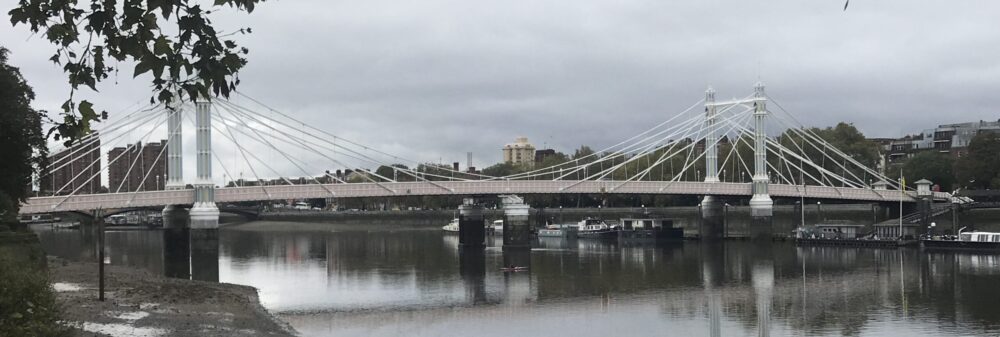
One of my all time great London moments was a late summer evening about 30 years ago when I was walking home from a meeting in Chelsea. Although Albert Bridge was closed to traffic, and although pedestrians could cross I was the only person on it. At the middle I paused to look downriver and at that very moment all the 4,000 lights that illuminate the bridge came on. Magical; it felt like this was being done just for me.
This is the bridge at the upriver end of Battersea Park, built in 1873 as a toll bridge (the tollbooths remain, the capital’s only surviving examples of bridge tollbooths) and named after Queen Victoria’s husband Albert, the Prince Consort. It was not commercially successful and was taken into public ownership by the Metropolitan Board of Works in 1879 and the tolls abandoned.
Designed by engineer Rowland Mason Ordish it isn’t, despite appearances, a conventional suspension bridge, but uses the Ordish-LeFeuvre system (on suspension bridges the deck hangs from the cables that are strung between the towers. The deck on Albert Bridge has iron rods from the towers to the deck). Less than a dozen years after it was opened the bridge was assessed as being structurally unsound (the iron rods were already corroded) and steel suspension chains were added to strengthen it and a weight limit imposed.
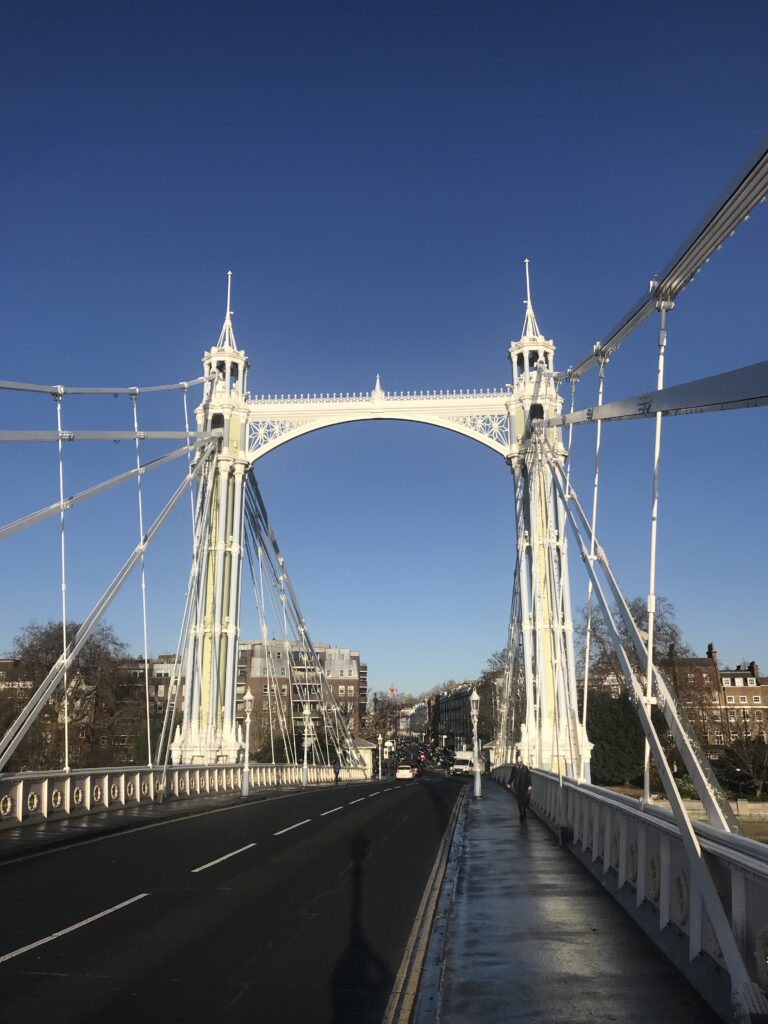
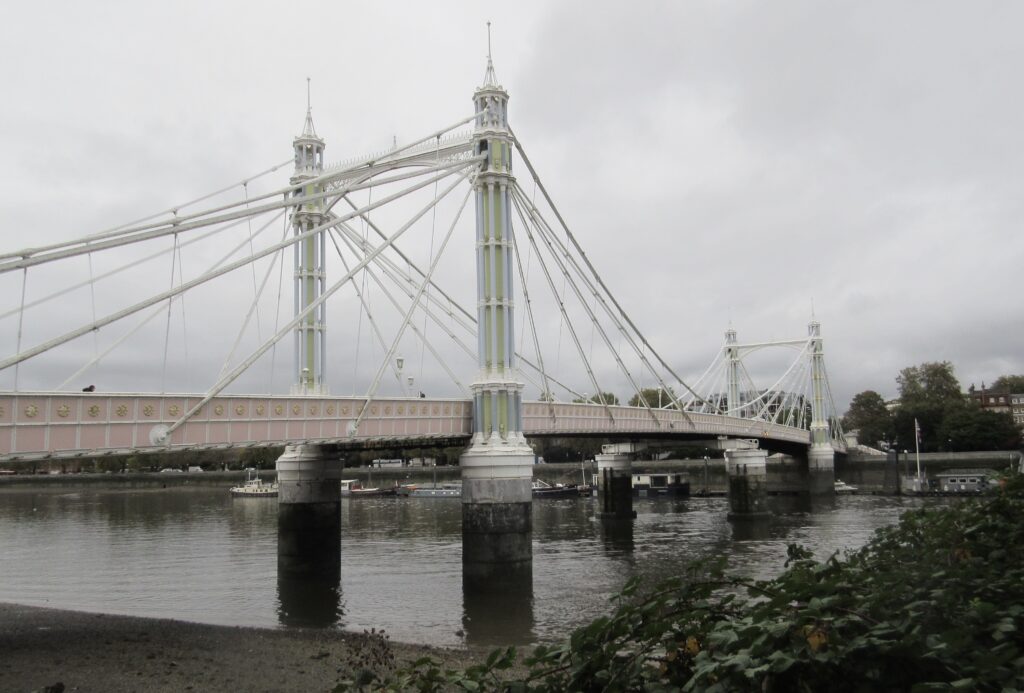
It was known as the ‘Trembling Lady’ (echoes of the much more recent ‘wobbly bridge’) because of its tendency to sway, and notices were put up (which are, anachronistically and redundantly, still there), instructing troops to “break step” when marching over. In the 1970s a new concrete pier was added to support the centre and, in engineering terms, it ceased to be a suspension bridge, although the suspension cables (and Ordish’s iron rods) remain.
In the 1970s there was a proposal to pedestrianise the bridge and turn it into a landscaped public park; a Garden Bridge no less (presumably for a fraction of the cost that was spaffed on Heatherwick’s). Despite widespread support from the public and the GLC opposition from the motoring lobby, led by the RAC and the British Road Federation, meant that a public enquiry rejected the idea. A great loss.
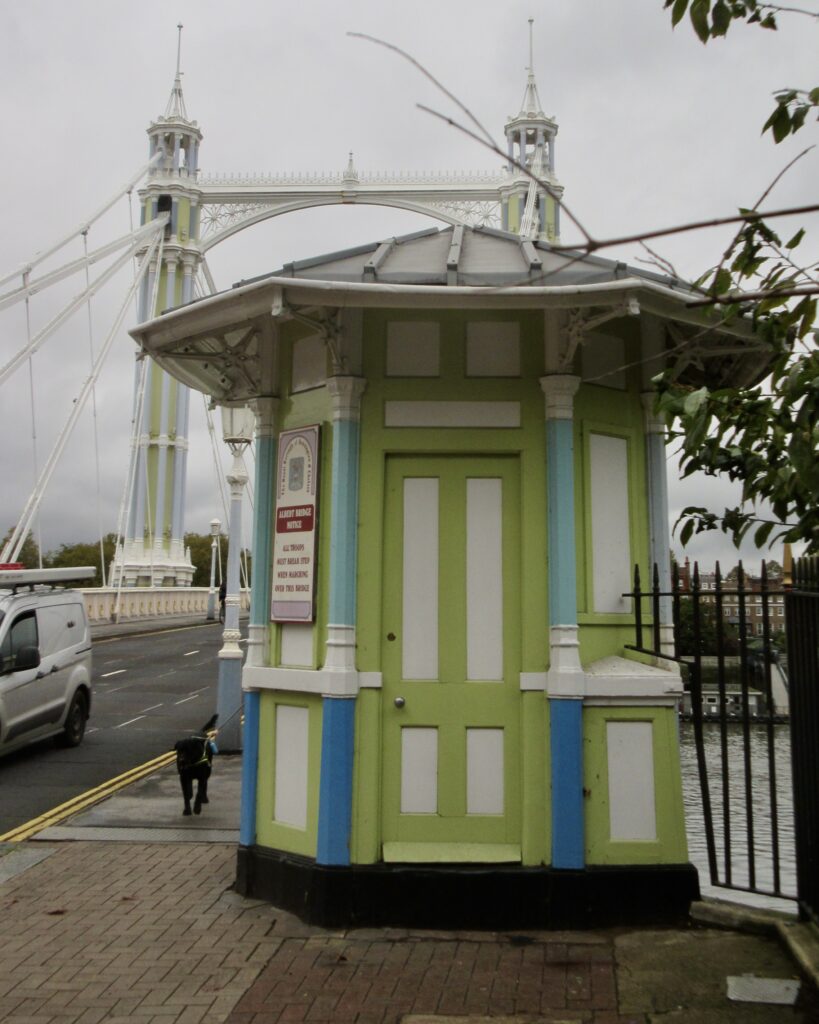
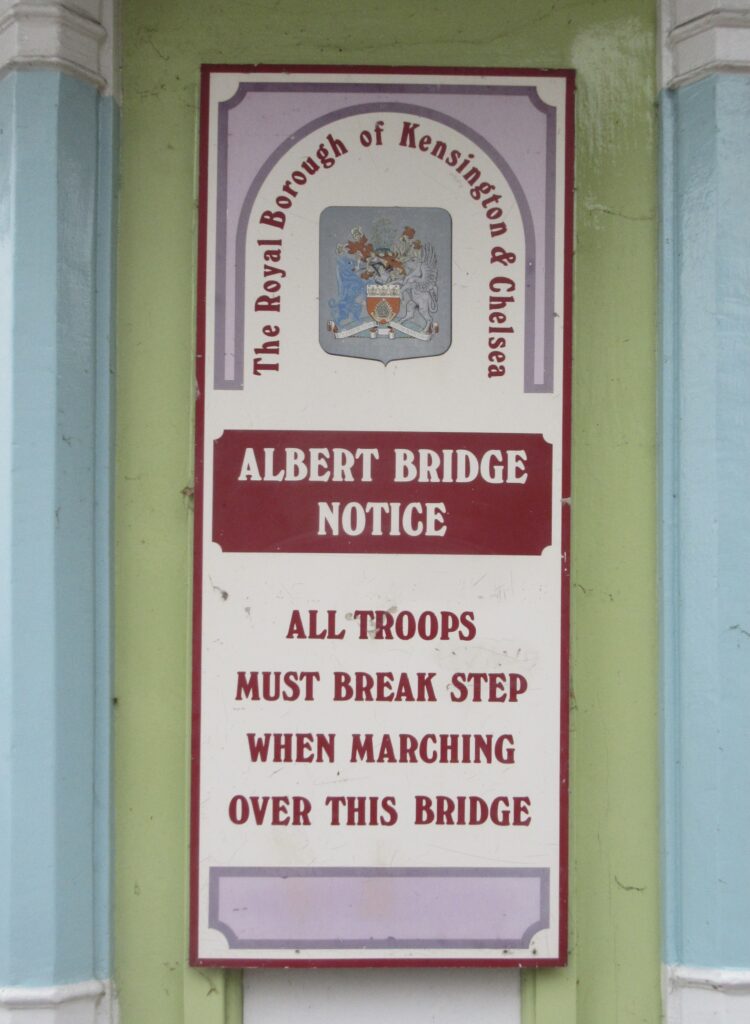
In any poll of prettiest London bridges Albert Bridge will easily make the top three – John Betjeman called it “One of the beauties of the London river” – although not everyone has been so complimentary. The architect Reginald Blomfield – who designed Lambeth Bridge – said that it looked like “a temporary gangway flung across the river, and in fact is not very much more.”
Although extensively repaired and strengthened a dozen years ago, the bridge is still off limits to larger vehicles, with iron posts that narrow the access at each end. Hours of fun can be had watching drivers of SUVs lose their nerve as they approach these obstacles from the Chelsea Embankment side, inching their way through at walking pace or, in the very best cases, deciding that their Chelsea Tractor won’t fit the gap at all and blocking the junction until talked through by another motorist.
Over the decades proposals to demolish the bridge and replace it with something more “suitable” for modern road travel have come and – thankfully – gone, to leave us with a charming, impractical, beautiful relic.
To get a monthly email of my latest blog posts, just put your email in the box below.
Or follow my facebook page for London posts and photos. And I’m also on Instagram.
